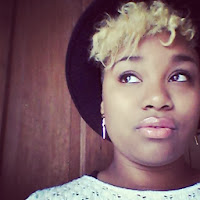Big Chop Update: Tedica
 |
| Puff VS Protective Style |
IndigenousCurls Catches
up with Tedica!
It's been 3 months since first meeting Tedica, who shared
her big chop story with US.Her hair has been in Protective styles since the BC. She
shares with Us how she successfully removes her protective style and updates us
on her journey.
 |
| Before Big Chop VS 3months Post BC |
IndigenousCurls
: What have you been up to? How are you handling your new do? What are your
current concerns?
Tedica : Its been months since going natural. Surprisingly, I like it!
I was a little worried at first, now Im surprised by how much I actually like my hair. I would say my only issue with it is; Length, but I can see myself really loving it maybe after about a year.
IndigenousCurls
: What steps do take to remove your protective style
and maintain your hair?
Tedica’s Tips for a Protective
Style Take Down
when taking down a
weave..
Step one: I have a
friend cut the weave free using a small scissors.
Step two: I then took the
braids out using my fingers. I rocked my braidout, but it was just to uneven looking.
Step three: using a
large comb and a bit of carrot oil, it was easy to detangle in small
sections. After I completely comb through, I then use a scarf
pulling it all back and tying the scarf around.
IndigenousCurls: Scarves & head wraps are all the rage this
season. You really cant go wrong with them! There are so many ways to tie them,
I love it!
Tedica: I tried to do different looks but only came up with one
that I was happy with.
IndigenousCurls: How are your friends and family reacting to
your new do?
Tedica: I was very surprised at
the reactions of friends and family. I got a lot of positive feedback on the
natural look! Honestly, it made me consider completely going natural.
IndigenousCurls: Last time we spoke you were not completely 'sold' on the natural hair movement. I'm so happy to hear you are falling in Love!
Tedica: I surprised
myself! I actually like it more than I thought I
would! Maybe after about a year I would be a little bit more comfortable being
able to do different styles.
IndigenousCurls: Thank you for Sharing with Us! Im excited to continue
to follow your journey.




























